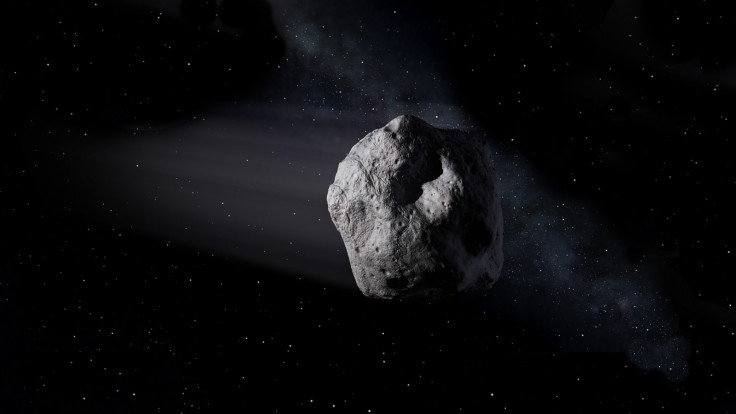Asteroid as big as a house will fly by between the Earth and Moon this October
Asteroid has already been spotted flying close to Earth in 2012.
An asteroid the size of a house will fly past close to Earth on 12 October 2017, astronomers from the European Space Agency (ESA) have announced.
It will swoop past the Moon's orbit, but without posing any danger to our planet. Indeed, the scientists have estimated that it would zoom past at a distance of about 44,000 kilometres (27,300 miles) – an eight of the distance from the Earth to the Moon.
"We know for sure that there is no possibility for this object to hit the Earth," Detlef Koschny of ESA's 'Near Earth Objects' research team told AFP. "There is no danger whatsoever."
The large space rock is thought to be between 15 and 30 metres long, travelling at a speed of about 14 kilometres per second.
The asteroid, which has been called 2012 TC4 by astronomers, was first seen close to Earth in October 2012, but had since then disappeared from view. On this occasion it came less close than it will this year.
Scientists expected to see 2012 TC4 again sometime this year, but could not predict when and how close to the planet this would happen.
The scientists finally got more details earlier this year, when they used the the Very Large Telescope of the European Southern Observatory (ESO) in Chile and spotted the rock some 56 million kilometres away. Monitoring it closely for a few days, they were able to determine its trajectory - and thus determine if it was likely to come dangerously close to us.
"Essentially, when we spot an asteroid, we watch it move along a small arc of its orbit, so we can extrapolate from this arc to the full orbit – it won't be a perfect prediction of the orbit, however. Once we have an estimate of the orbit we can propagate it forwards in time to see if the orbit crosses the Earth's orbit. There will be uncertainty in how the asteroid orbit will evolve over time. Because of the uncertainty in our knowledge of the orbit, scientists can only provide a probability of an impact," Hugh Lewis, Senior Lecturer in Aerospace Engineering at the University of Southampton, had previously told IBTimes UK.

Although there is no danger this asteroid will hit us this time round, astronomers recognise that it will be near enough to be called a 'close miss'.
For them, the event will provide a rare opportunity to test Earth's 'planetary defence' systems. TC4's movements "is an excellent opportunity to test the international ability to detect and track near-Earth objects and assess our ability to respond together to a real asteroid threat," officials from ESA said in a statement.
At the moment, this planetary defence focuses on early warning rather than active asteroid deflection. But in the future, astronomers might test innovative methods to throw approaching asteroids off course.
One of the methods modelled by scientists is known as the 'Kinetic impactor', which would involve sending a large high-speed spacecraft in the path of an approaching asteroid in an attempt to change its path. The other possible method known as 'gravity tractor' would involve diverting the asteroid using the gravity of a large spacecraft.
Although a lot of space agencies have worked on this subject, these methods have never been tested so far due to a lack of funding.
© Copyright IBTimes 2025. All rights reserved.






















